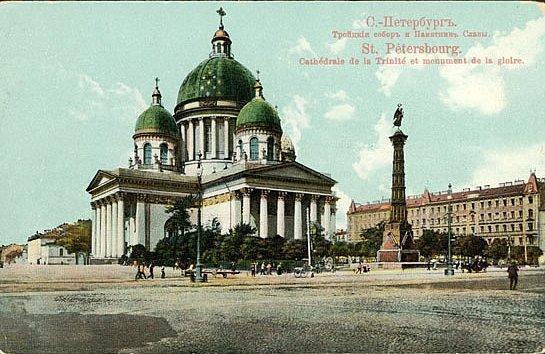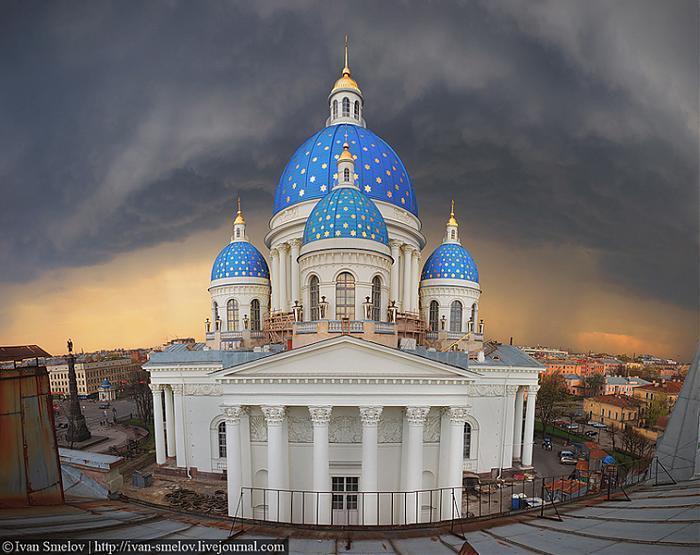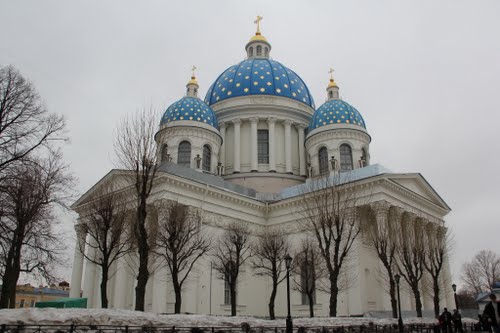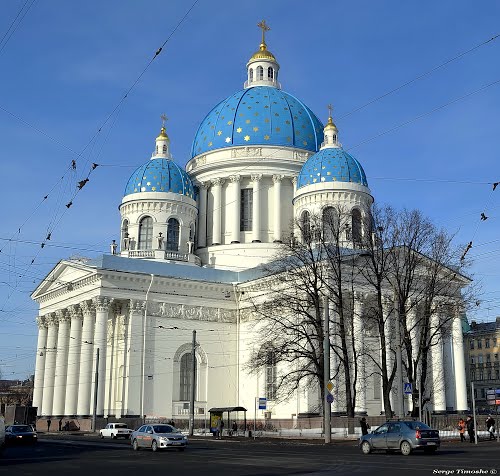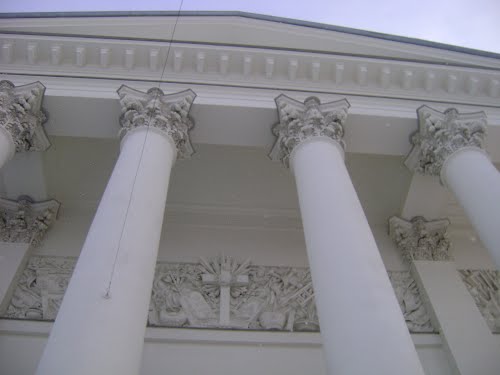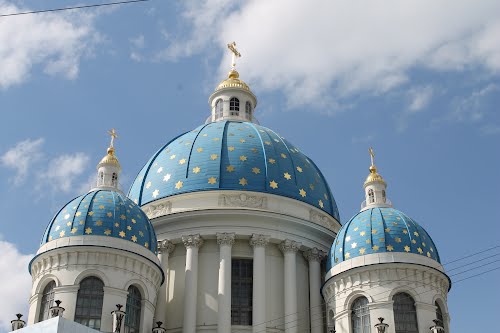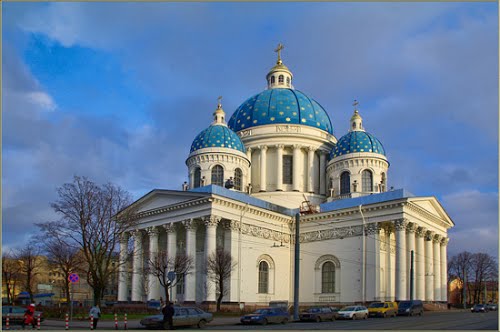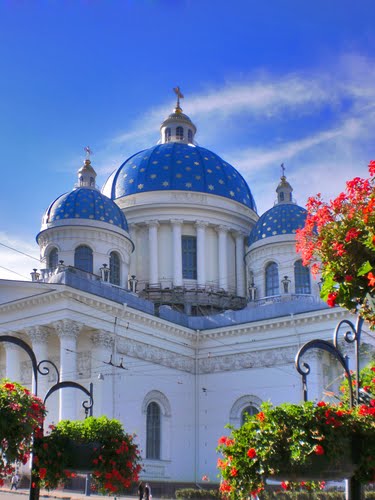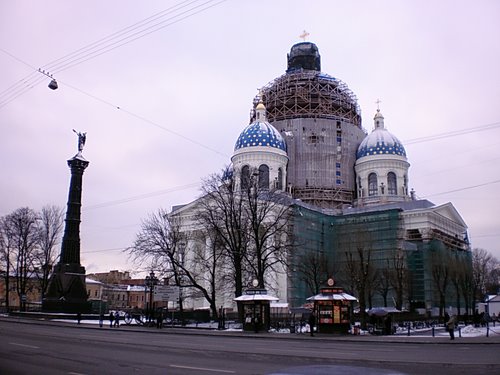The Trinity Cathedral, sometimes called the Troitsky Cathedral, in Saint Petersburg, Russia, is a late example of the Empire style, built between 1828 and 1835 to a design by Vasily Stasov. It is located due south of the Admiralty on Izmaylovskiy Prospekt, not far from the Tekhnologichesky Institut Metro station.
The cathedral, which can accommodate up to 3,000 visitors, has only recently begun to be restored to its pre-Revolutionary splendor after years of neglect. In honor of the victory in the Russo-Turkish War, 1877–1878, when the Russians liberated Bulgaria from the Ottoman domination, a memorial column was constructed in front of the northern facade of the cathedral in 1886. The cathedral became a part of the Saint Petersburg World Heritage Site in 1990.
On August 25, 2006, with reconstruction work underway, the main dome of the Cathedral collapsed after a fire, as did one of the smaller domes. The cathedral was restored and reopened in 2010.
History
Early years
According to the Russian tradition, each regiment of the imperial guards had its own cathedral. The Trinity Cathedral was the regimental church of the Izmailovsky regiment of Imperial guards, which takes its name from a royal residence in Izmailovo, near Moscow.
On July 12, 1733, a large field tent operating as a church was consecrated in St. Petersburg, with icons painted on a dark blue satin. However, the church functioned only in the summer, and in winter the soldiers and officers had to attend other parish churches. In 1754–1756, a wooden church was built on the site on order of Empress Elizabeth. The church had two altars, the main one of which was consecrated in the name of the Trinity. It suffered heavy damage as a result of the flood of 1824 and had to be rebuilt, a commission given by Emperor Nicholas I to Vasily Stasov.
Construction of the present church
Construction of the new church began in May 1828, and the cathedral was consecrated in May 1835. The cathedral rises to a height of more than 80 meters, and dominates the skyline of the surrounding area. Memorial plaques to regimental officers killed in battle were mounted on the cathedral's wall. After the cathedral's opening, flags, keys from forts and other trophies that the regiment won in campaigns in 1854–1855 and 1877–1878 were also housed in the cathedral.
The Trinity Cathedral was renowned for its collection of icons. The main section of the cathedral housed the Nativity icon, while the southern section housed the Jesus Christ icon. Empress Elizabeth presented the church with the Beginning of Life Trinity icon in 1742. Other holy objects housed in the cathedral included a large ark made in the form of a cross in 1753 from silver, a large silver cross presented to the cathedral by Nicholas I in 1835, and two large Gospels in valuable bindings.
Post-Revolution
In 1922, most of the cathedral's valuables were looted, and the thievery continued for several more years until the cathedral was finally closed in 1938. There were rumors of plans to demolish the cathedral and use the remaining material for a district workers' theatre. However, the cathedral was transferred to the Soviet Ministry of Telecommunications, for which it became a warehouse. Only in 1990 did the cathedral return to the hands of the buttOrthodox Church, when restoration began. By that time, the interior was largely bare, compared to the splendor and majesty of its pre-Revolutionary past.

